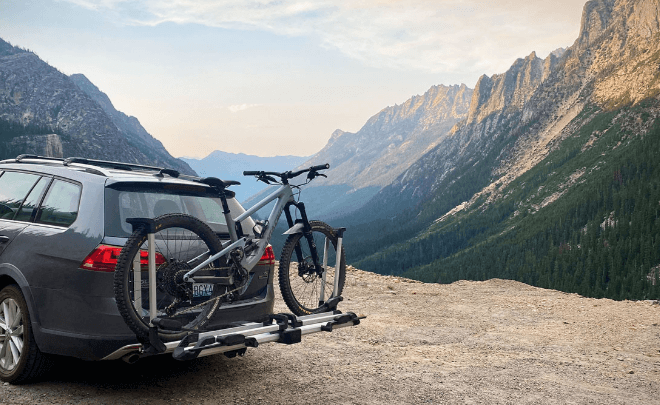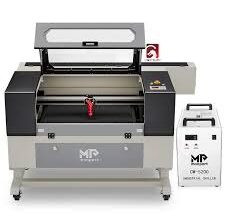10 Tips for Maintaining Your Hitch Bike Rack

Cycling enthusiasts know the importance of a reliable bike rack, especially when it comes to hitch-mounted ones. A well-maintained bike rack ensures that your two-wheelers are secure during transportation and prevents any mishaps on the road. Here are ten essential tips to keep your hitch bike rack in top condition, ensuring both safety and longevity.
Tips to maintain hitch bike rack
Using a hitch bike rack offers unparalleled convenience and versatility for cyclists of all levels. Unlike roof-mounted racks that can be cumbersome to load and unload, hitch bike racks provide easy access to your bikes at waist height, eliminating the need for heavy lifting or awkward maneuvers. Additionally, hitch racks are compatible with a wide range of vehicle types, from SUVs to sedans, and can often accommodate multiple bikes securely.
Their sturdy construction ensures stability on the road, reducing the risk of damage to your bikes or vehicle during transit. The ability to quickly install and remove the rack as needed makes it the ideal solution for spontaneous outings or frequent cyclists who want hassle-free transportation for their bikes. Whether you’re embarking on a weekend adventure or simply commuting to your favorite trails, a hitch bike rack offers the convenience, security, and peace of mind you need to enjoy the ride. Here are tips for maintaining these bike racks:
Regular Cleaning
Start with the basics: keeping your bike rack clean. After every use, wipe down the rack with a damp cloth to remove dirt, debris, and road grime. This prevents the buildup of corrosive materials and preserves the finish of the rack.
Lubricate Moving Parts
Hitch bike racks have several moving parts, such as hinges and locking mechanisms. Regularly lubricate these parts with a silicone-based lubricant to prevent rust and ensure smooth operation. Pay special attention to pivot points and areas prone to friction.
Inspect for Wear and Tear
Periodically inspect your bike rack for any signs of wear and tear. Look for cracks, loose bolts, or damaged straps. Addressing these issues promptly prevents further damage and ensures the safety of your bikes during transportation.
Tighten Bolts and Fasteners
Before each trip, check all bolts and fasteners to ensure they are tightened securely. Vibrations during transportation can cause bolts to loosen over time, compromising the stability of the rack. Use a torque wrench to tighten bolts to the manufacturer’s specifications.
Protect Against Corrosion
Hitch bike racks are exposed to the elements, making them susceptible to corrosion, especially in humid or coastal areas. Apply a corrosion-resistant coating or paint to vulnerable areas of the rack, such as steel components and welds, to protect them from rust.
Store Properly
When not in use, store your bike rack in a dry and sheltered location, away from direct sunlight and moisture. If possible, remove the rack from the hitch receiver and store it indoors to prolong its lifespan and prevent unnecessary exposure to the elements.
Use Security Features
Many hitch bike racks come with built-in security features, such as locking hitch pins and cable locks, to prevent theft of both the rack and the bike. Always use these security measures when leaving your bikes unattended, whether it’s a quick stop or an extended break during a road trip.
Adjust for Different Bikes
If you regularly transport bikes of varying sizes and styles, familiarize yourself with your bike rack’s adjustable features. Adjust the wheel trays, frame clamps, and straps to accommodate different bike sizes and geometries, ensuring a secure fit for each bike.
Check Hitch Compatibility
Ensure that your bike rack is compatible with your vehicle’s hitch receiver and weight capacity. Using an incompatible hitch or exceeding the weight limit can damage both the rack and the vehicle and create potential safety hazards on the road.
Read also Online ID Fraud Prevention Solution: An Inclusive Guide For Unveiling Imposters
Follow Manufacturer Guidelines
Lastly, always follow the manufacturer’s guidelines and recommendations for installation, use, and maintenance of your hitch bike rack. Refer to the owner’s manual for specific instructions on assembly, adjustment, and maintenance procedures to ensure optimal performance and safety. You should also choose a well named brand such as VelociRax. With bike racks like them, you can ensure you require minimum maintenance.
Conclusion
In this article, we have given you instructions on how to maintain your hitch bike rack. Proper maintenance of your hitch bike rack is essential for safe and enjoyable cycling adventures. By following these ten tips, you can prolong the lifespan of your bike rack, ensure the security of your bikes during transportation, and have peace of mind on the road. Remember, a well-maintained bike rack means more miles of hassle-free cycling enjoyment. Read the above-mentioned post carefully to learn about the maintenance of hitch bike racks in detail.





